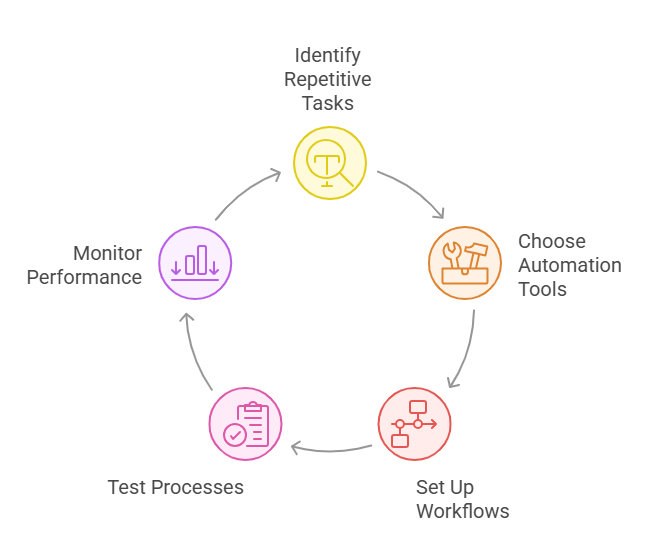Running a successful business means turning sales from a guessing game into a predictable process. When you're juggling multiple responsibilities as a business owner, having a structured approach to selling becomes essential for sustainable growth.
Creating a repeatable sales system transforms how your business operates by establishing clear processes that anyone on your team can follow. This systematic approach helps maintain consistency, improves training efficiency, and ultimately drives better results across your sales efforts.
The key lies in understanding that successful sales processes aren't just about closing deals—they're about creating experiences that customers value while building a framework your team can replicate time after time.
Why Systematic Sales Processes Transform Business Operations
A systematic sales process provides the foundation for creating a repeatable sales system that drives consistent business growth. When your approach to sales follows a structured framework, every interaction becomes more purposeful and predictable.
- Standardized processes simplify training for new team members, reducing onboarding time and ensuring everyone follows proven methods
- Team collaboration improves when everyone understands their role within the sales framework and how their efforts contribute to overall success
- Predictable sales results become achievable when you can identify which activities consistently lead to conversions
- Resource allocation becomes more efficient as you can focus time and energy on the most effective sales activities
Research suggests that businesses with well-defined sales processes tend to see more consistent performance across their teams. This consistency helps owners make better decisions about staffing, inventory, and business expansion based on reliable sales forecasts.
Essential Elements of Customer Journey Mapping
Understanding customer journey mapping forms a crucial component of any repeatable sales system. By identifying how customers interact with your business at each stage, you can optimize touchpoints and improve conversion rates.
- Initial awareness stages help you understand how potential customers first discover your products or services
- Consideration phases reveal what information customers need to make informed purchasing decisions
- Decision points highlight the factors that ultimately influence whether customers choose your business over competitors
- Post-purchase experiences determine whether customers become repeat buyers and recommend your business to others
Data-driven insights from customer journey analysis can significantly boost your conversion rates by revealing pain points that might otherwise go unnoticed. When you address these friction areas, customers move more smoothly through your sales process, leading to better outcomes for everyone involved.
Building Effective Team Training Programs
Staff training becomes much more manageable when you have a repeatable sales system in place. A structured approach to training ensures that every team member can deliver consistent results regardless of their experience level.

- Clear role definitions help team members understand their specific responsibilities within the sales process
- Skill development focuses on the competencies that directly impact sales performance in your particular business
- Performance standards provide measurable goals that team members can work toward and achieve
- Ongoing support ensures that training continues beyond the initial onboarding period
Training programs work best when they're tailored to your business's growth stage and typical customer interactions. What works for a small startup might not suit a more established business, so your training approach should reflect your current needs and future goals.
Optimizing Customer Interactions for Better Outcomes
Every customer interaction represents an opportunity to strengthen your sales process and improve future results. Optimizing these touchpoints requires careful attention to what customers actually need and want from your business.
- Communication timing affects how receptive customers are to your messages and offers
- Channel preferences vary among customers, with some preferring phone calls while others respond better to emails or text messages
- Information delivery should match the customer's current stage in the buying process
- Follow-up strategies help maintain momentum without becoming overwhelming or pushy
The goal of optimization is to create experiences that feel natural and helpful to customers while moving them closer to a purchase decision. When interactions align with customer needs, the entire sales process becomes more effective and enjoyable for everyone involved.
Steps for Implementing CRM Automation Successfully
CRM automation plays a vital role in creating a repeatable sales system by handling routine tasks and ensuring consistent follow-up with prospects and customers.

- Start by identifying which repetitive tasks consume the most time in your current sales process, such as sending follow-up emails or updating customer records
- Choose automation tools that integrate well with your existing systems and don't require extensive technical knowledge to operate effectively
- Set up workflows that trigger appropriate actions based on customer behavior, ensuring timely responses without manual intervention
- Test your automated processes thoroughly before fully implementing them to catch any issues that might confuse customers or create problems
- Monitor performance regularly to identify opportunities for improvement and adjust automation rules as your business evolves
The key to successful CRM automation is starting small and gradually expanding your automated processes as you become more comfortable with the technology. This approach helps prevent overwhelming your team while building confidence in the system's effectiveness.
Measuring and Maintaining Sales Process Effectiveness
Maintaining the effectiveness of your repeatable sales system requires ongoing measurement and adjustment based on actual performance data and changing business conditions.
- Track key performance indicators that directly relate to your business goals, such as conversion rates, average deal size, and sales cycle length
- Review customer feedback regularly to identify areas where your sales process might be causing friction or confusion
- Analyze team performance data to spot training opportunities or process improvements that could benefit the entire organization
- Update your sales processes periodically to reflect changes in customer preferences, market conditions, or business objectives
- Document successful modifications so that positive changes become permanent parts of your systematic approach to sales
Remember that even the best sales systems require periodic updates to remain effective. Market conditions change, customer expectations evolve, and your business grows, all of which may require adjustments to your approach. Regular review and refinement help ensure your sales system continues supporting your business goals.
Creating a repeatable sales system isn't just about improving your current sales results, it's about building a foundation for sustainable business growth. When you have clear processes, well-trained team members, and optimized customer interactions, your business becomes more resilient and scalable.
The investment in developing these systems pays dividends through improved team performance, better customer experiences, and more predictable revenue streams. As your business continues to grow, having these foundational elements in place makes it easier to adapt and expand without losing the consistency that drives success.
Start by focusing on one aspect of your sales process and gradually build out your systematic approach. Whether you begin with customer journey mapping, team training, or automation, each improvement brings you closer to having a truly repeatable system that supports your business objectives.

.png)






